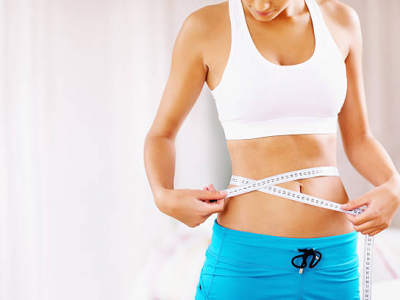Many of us assume vitamin D supplementation isn’t necessary. Isn’t spending time outside and eating foods rich in vitamin D enough?
Unfortunately, it’s not!
Very few foods have therapeutic levels of vitamin D that will naturally support our health needs. Many people are also spending an increasing amount of time indoors, both working and living. That combination creates a higher risk for lower vitamin D levels.
Let’s take a look at 12 of the most common signs of vitamin D deficiency, plus some tips for boosting your intake.
Note: The following symptoms can also be caused by other medical conditions, so a healthcare professional should be consulted for a proper diagnosis. If you suspect a vitamin D deficiency, your doctor can perform blood tests to measure your vitamin D levels and recommend supplements or dietary changes if necessary.
Photo Credit: Shutterstock
If you’re noticing persistent aches, joint pain, or muscle weakness, it might be caused by low vitamin D levels.
When levels are low, your body can’t absorb calcium and phosphorus as efficiently. This causes an increased risk of symptoms like bone pain, muscle pain, muscle weakness, falls, low bone mass, and even bone fractures.
If left untreated, these symptoms could become later diagnoses of osteomalacia, osteoporosis, and myopathy.
Photo Credit: Shutterstock
Vitamin D can help keep your immune system healthy and your energy levels up. When there is a lack of vitamin D, your energy levels can start to deplete.
If you’re feeling exhausted or more fatigued than usual, it may be worth considering whether you are getting enough of this essential vitamin.
Feelings of fatigue might also come from depression or feelings of sadness that are also common signs of vitamin D deficiency.
Photo Credit: Shutterstock
Not only can you experience white spots or patches on your skin from low levels of vitamin D, you might also notice a dull complexion, less glow, dry or flaky skin on your face or other areas of your body.
The white patches are not typically a cause for concern but a good sign that your body is telling you something is off.
Photo Credit: Shutterstock
Vitamin D plays an important role in our immune system. If vitamin D levels are too low, our body’s ability to fight off infections weakens. As you can imagine, this will greatly increase the chance of getting sick.
You may notice frequent colds, the flu, or respiratory tract infections like bronchitis and pneumonia.
Photo Credit: Shutterstock
Vitamin D has an influence on calcium in the body. Low levels of calcium (hypocalcemia) can cause irregular heartbeat. At a severe level, this could lead to cardiac events.
So, believe it or not, because of its relationship with calcium, low levels of vitamin D can lead to heart palpitations or other heart-related symptoms.
Photo Credit: Shutterstock
Vitamin D has an impact on many bodily functions. One of these is our circadian rhythm, which helps us regulate sleep.
If you are vitamin D deficient, your sleep may be off, too. This can cause feelings of tiredness, fatigue, and even chronic fatigue syndrome. Lack of sleep can cause symptoms of lightheadedness or dizziness, making these another sign of vitamin D deficiency.
Photo Credit: Shutterstock
Vitamin D is fat-soluble, which means the more body fat you have, the more it gets diluted.
People who are overweight or obese may require more daily vitamin D to make up for this dilution effect. Not to mention, with depression and fatigue being other possible symptoms, it can be difficult to exercise regularly and stay healthy!
Photo Credit: Shutterstock
There are lots of vitamins that are important for your hair and nails. Vitamin D is one of them.
Low vitamin D levels can make nails feel softer and thinner than usual. The medical term for this is hapalonychia. This can cause your nails to break more easily or split and flake at the end.
Photo Credit: Shutterstock
You may not have thought lower back pain could be linked to the “sunshine vitamin,” but it can be!
Lower back pain, and bone pain in general, can be a symptom of vitamin D deficiency. Vitamin D helps our body absorb calcium, which helps maintain bone health. Without enough, we start to see decreased muscle strength in the waist, back, and neck.
Photo Credit: DepositPhotos
One of the classic signs of vitamin D deficiency is a sweaty head. Oddly enough, doctors used to ask new mothers about head sweating in their newborns for this very reason.
You should also pay attention to changes in sweating patterns.
Photo Credit: Shutterstock
Since vitamin D is a fat-soluble vitamin, this means if you have a gastrointestinal condition that affects your ability to absorb fat, you’ll likely have trouble absorbing fat-soluble vitamins like vitamin D.
This includes people with Crohn’s, celiac, or inflammatory bowel diseases.
Photo Credit: Depositphotos
Vitamin D seems to improve levels of serotonin, a neurotransmitter that has been known to boost your mood.
Studies have shown healthy adults given vitamin D supplements during the cooler months reported greater positive mood than those given a placebo. Vitamin D is important for your mental health!
Photo Credit: Shutterstock
There are a few different ways to improve a vitamin D deficiency. You can choose to get some rays outside, make changes to your diet, or try a supplement. Learn a little more about each option below!
Sunlight. You probably guessed it, but you can get more of this “sunshine vitamin” from getting outside! Sensible sun exposure is key. Vitamin D production only occurs on unprotected skin. So, you’ll need to expose your arms, legs, abdomen, and back for maximum vitamin D production. That being said, be mindful of your body’s sensitivity to burn.
Nutrition. It’s difficult to get your full vitamin D intake through nutrition, but you can find it in certain foods, such as fatty fish (salmon, tuna, mackerel, sardines), fortified milk, cod liver oil, egg yolks, and mushrooms. But remember, less than 10 percent of women over 50 are getting the right amount of vitamin D through their diet.
Supplements. Vitamin D supplements are an inexpensive and effective way to lower your risk of vitamin D deficiency. Be sure to choose a high-quality vitamin D supplement blended with a non-GMO oil.*
*Always speak with your doctor before starting supplementation.
Photo Credit: Shutterstock
Juicing has become quite popular in the last ten years, popping up in local strip malls, cafes, and gyms because drinking fresh juice makes you feel so good!
Don’t worry—juicing for beginners can be fun and uncomplicated. Here are some of my best tips and juicing recipes to get you started!
Juicing Recipes and Tips For Beginners
Photo Credit: Shutterstock
Blue Zone foods promote longevity while giving you serious health benefits in daily life.
How do we know? The truth is in the numbers! The longest living social circles of people use healthy habits mixed with the Blue Zones diet.
The following nine foods are found in the diets of people who are outliving the rest of us.
9 Blue Zone Foods to Increase Longevity
Photo Credit: Shutterstock
If your diet or fitness regimen includes daily vitamins and supplements, you’re likely familiar with the benefits of collagen peptides and whey proteins.
While both are beneficial to your joint and muscle health (especially if you work out often), many people often wonder: what exactly is the difference between collagen protein vs. whey protein?











Comments